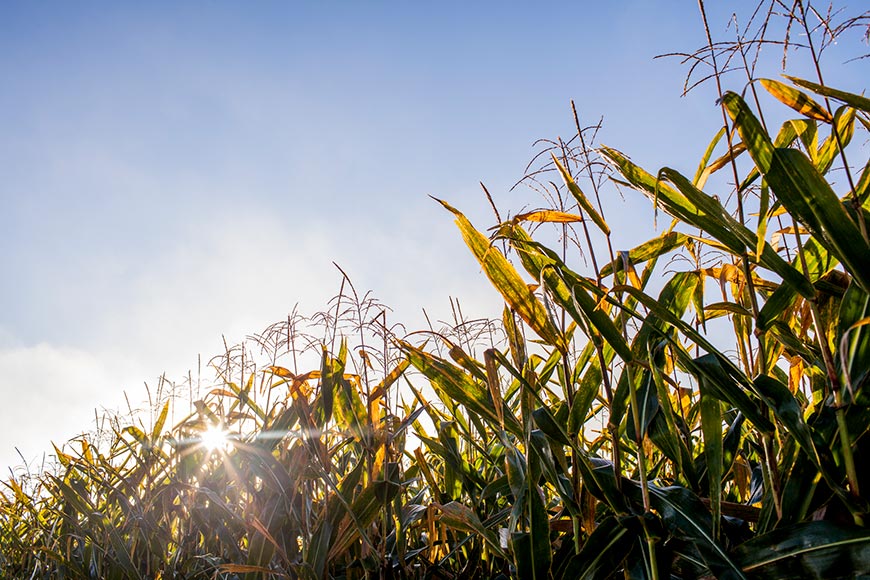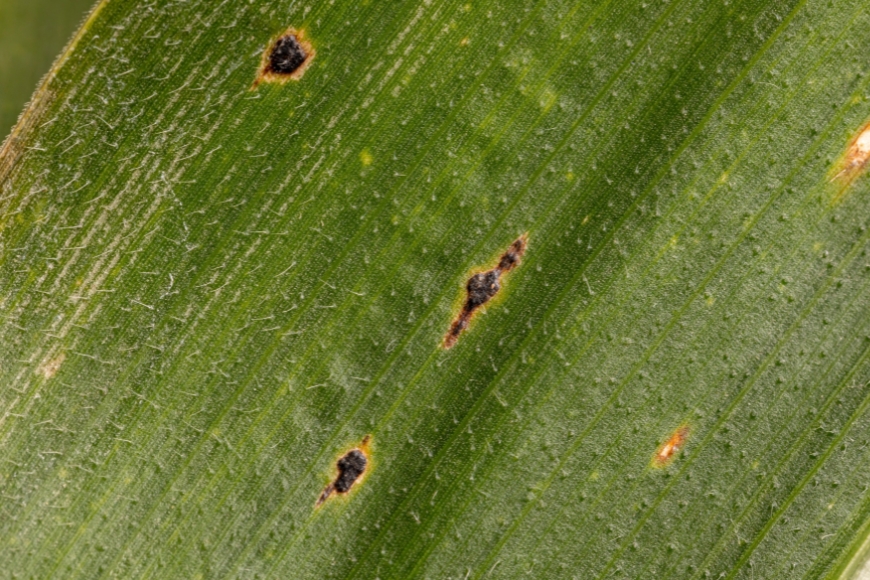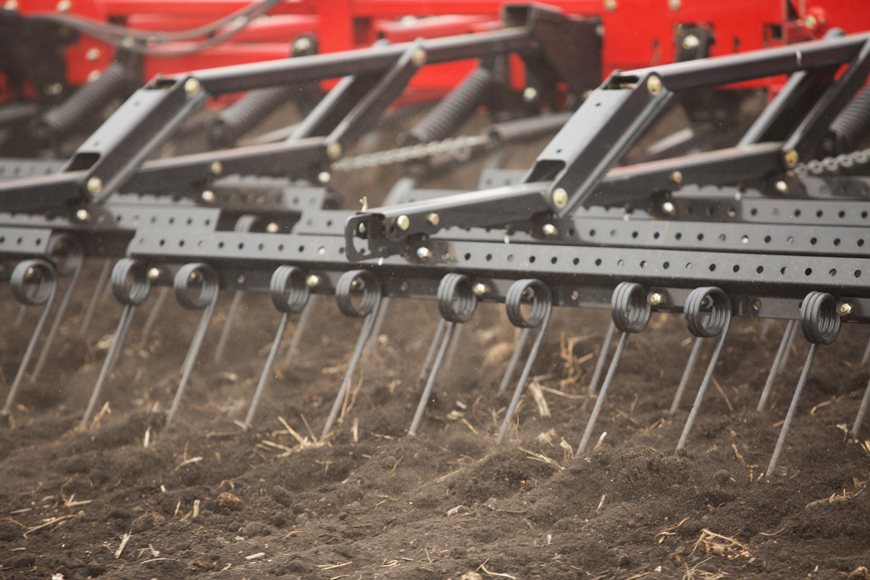Fungicides Continued to Prove Their Value in 2019

In 2019, for the fourth year in a row in my area of west-central Minnesota, farmers saw very little if any foliar or fungal disease lesions on corn plants. You have to look really hard to find even a little bit of eyespot, common rust or northern corn leaf blight. Rarely do we see gray leaf spot. But even in the absence of disease, fungicides continue to prove their value. Here are some things to keep top of mind when considering a fungicide application for your farm.
1. Fungicides can help optimize your seed investment.
A hybrid with a high response to fungicide (RTF) is especially deserving of comprehensive management, particularly where a fungicide is concerned. Even during a wet, cool season like 2019, with late planting and yields that weren’t as high as in previous years, we still saw a positive yield response when a fungicide was applied — even in such an average-yielding year. In 2019, the national average RTF between a corn plant that received a fungicide application at R1 and untreated control was an additional 16.1 bushels per acre for the fungicide application.
2. Fungicides contribute to plant health.
Fungicides do more than protect plants from disease: They’re the right type of management tactic to implement, especially on acres with high yield potential. Even with little or no disease present, we still tend to see a positive yield response with a fungicide. And we know what hybrids have a high RTF through the WinField® United Characterization Charts, so targeting applications to high-RTF hybrids makes sense.
Fungicides also promote ethylene suppression, which helps keep plant cells young and actively converts sunlight energy into sugars and, ultimately, plant matter and yield. They also help plants more efficiently assimilate nitrogen into plant cells to build protein. So although we call them fungicides, even if you don’t currently have fungal diseases in your corn or soybean fields, you may still see a benefit from a fungicide because they are effective at helping protect or increase yield.
3. Disease pressure you had in 2019 could carry over into 2020.
Anytime you have disease in a crop, you can assume that if the disease overwinters, there will be spores and fungal pathogens left on crop residue in the spring. With last fall’s late harvest due to wet weather and the inability of farmers to get equipment into muddy fields, there are a lot of corn crops still standing in the field in parts of the northern Corn Belt.
If fall tillage wasn’t done, corn residue will likely be found on the soil surface. Since spring tillage is shallower than fall tillage, the root systems of whatever crops we plant in 2020 will be growing into what could be minimally incorporated, disease-infected residue, making 2020 corn crops more prone to becoming infected. Fall tillage would have buried residue 6 to 10 inches deep, where it could decompose more quickly.
4. An adjuvant in the tank protects your fungicide investment.
If you are going to invest in a fungicide application, you want to be sure that application reaches its target. Having a product like MasterLock® adjuvant by WinField United in the tank keeps more spray droplets in the ideal size range so they are big enough, heavy enough and have sufficient velocity to reach the target. Answer Plot® data has shown a 5.7-bushel-per-acre average yield increase in corn when MasterLock is added to the spray tank along with a fungicide, compared to using a fungicide alone.2
If you are spraying a fungicide on corn, in addition to MasterLock you may also want to include MAX-IN® Boron or a foliar micronutrient in the tank. For soybeans, the fungicide can be mixed with an insecticide for aphids in early August or maybe with a late herbicide application.
Fungicides prove their value every year, and 2020 will be no exception. Talk with your local trusted advisor about making a fungicide application an essential part of your management plan this season.
1. National average difference between fungicide application at R1 and untreated control. 2019 Answer Plot program data.
2. WinField United. 14 studies, 8 states, all fungicides. 2012–2017.
All photos are either the property of WinField United or used with permission.
© 2020 WinField United. Important: Before use always read and follow label instructions. Crop performance is dependent on several factors many of which are beyond the control of WinField United, including without limitation, soil type, pest pressures, agronomic practices, and weather conditions. Growers are encouraged to consider data from multiple locations, over multiple years, and be mindful of how such agronomic conditions could impact results. Answer Plot®, MasterLock®, MAX-IN® and WinField® are trademarks of WinField United.





